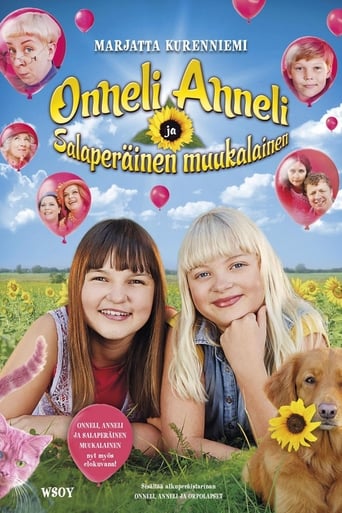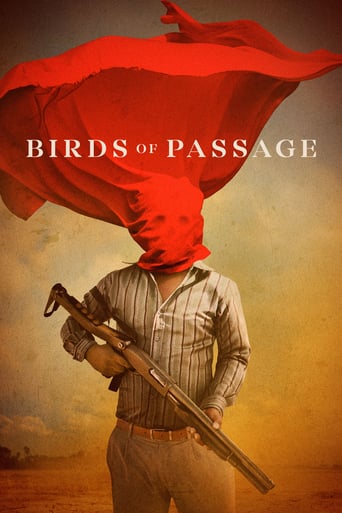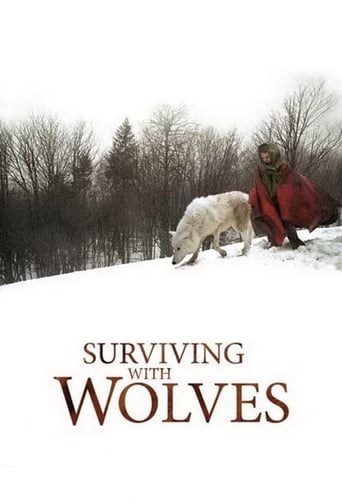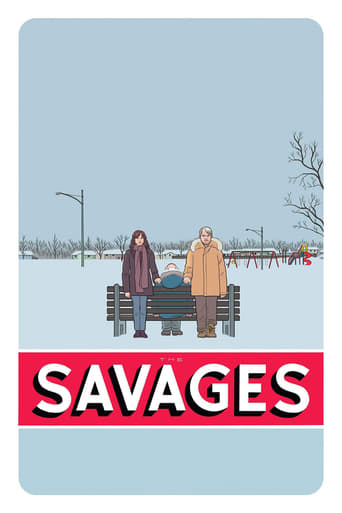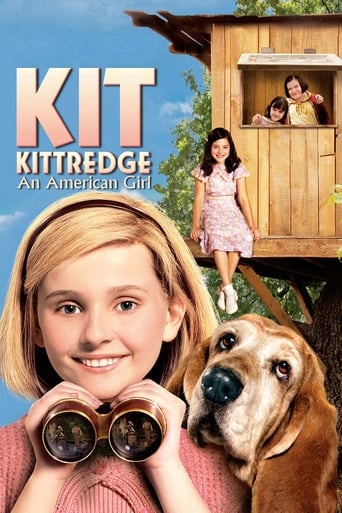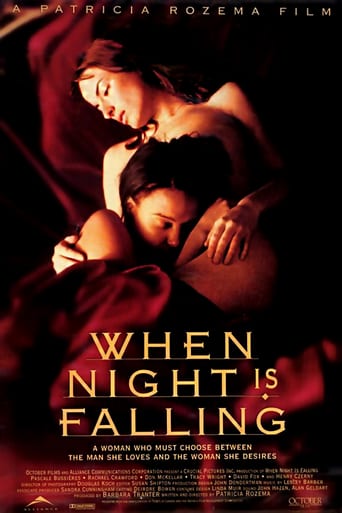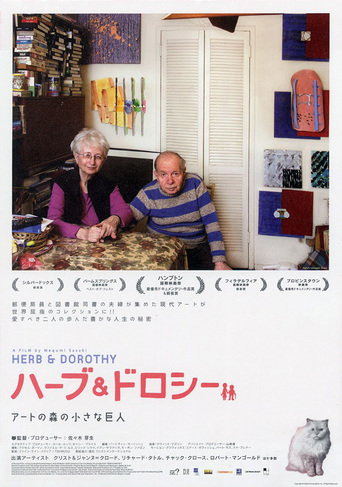
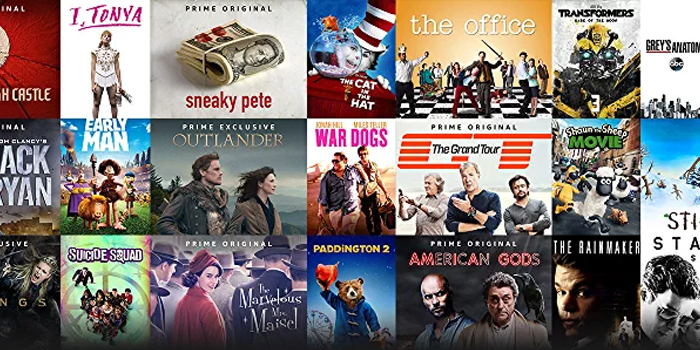
Herb & Dorothy (2009)
He was a postal clerk. She was a librarian. With their modest means, the couple managed to build one of the most important contemporary art collections in history. Meet Herb and Dorothy Vogel, whose shared passion and disciplines and defied stereotypes and redefined what it means to be an art collector.
Watch Trailer
Cast
Similar titles
Reviews
This movie is the proof that the world is becoming a sick and dumb place
People are voting emotionally.
This is a small, humorous movie in some ways, but it has a huge heart. What a nice experience.
The film never slows down or bores, plunging from one harrowing sequence to the next.
This documentary reviews the eclectic life of an art collector couple in New York City. They're a wonderful couple who devote their spare time to collecting art. And as one of the trailers mentioned "you don't have to be Rockefeller to buy art". This couple is now retired and had normal jobs – she was a librarian and he worked for the post office – but no children. They loaded up their rent-controlled apartment in Manhattan with the art they loved. I can't say that I was enamoured by the art they accumulated – but everyone has their own tastes! They didn't do this for the money either; they donated their collection to the National Art Gallery in Washington which is free to the public. This is a truly life affirming film about real people with a passion for the art world.
To use the old Latin phrase (translation:art for art's sake). This is an open book look at two of the modern/postmodern art world's patron saints, Herb & Dorthy Vogel,who boasts of having the largest collection of modern art (all confined in a one bedroom apartment in New York City,yet). We get to know a bit about Herb & Dorthy (Herb is a retired postal worker,while Dorthy is a retired librarian),a couple who were wed in 1960,and spent most,if not all of their spare time in small galleries,perusing works by up & coming artists & purchasing works that they knew would fit in their modest trappings (an amusing scene shows Herb & Dorthy mulling over a Sol LeWitt piece that was just a bit too tall for their apartment,resulting in their exchanging it for something a bit more compact by LeWitt). Over a period of thirty years (or so),they would amass thousands of paintings,sculptures & conceptual pieces,representing the cream of the art world (or so they figured). First time producer/director,Megumi Sasaki crafts a portrait of two people,in love with each other & art (they're rarely apart from one another for too long---a scene at an artists opening depicts a somewhat jealous Dorthy getting her dander up when she finds Herb talking to a woman across the room from her). The documentary is studded with interviews with what has to be a "who's who" of modern art (Robert Barry,Pat Stier,Richard Tuttle,Christo & Jeanne-Claude,Sol LeWitt,etc.),as well as vintage film footage of the New York art scene in the 1950's,thru the 1970's & beyond. A "must see" for patrons of the arts. Not rated,but contains nothing to offend.
The Vogels are a couple of modest means but focused passion who assembled a world-class art collection buying small, affordable works but choosing wisely and with love and living for art. They married in 1960 and collected from the ideal vantage point of New York City. He was a postal worker, sorting mail at night, and she was a librarian in Brooklyn Heights. They used his salary for the purchases and hers for the rent of their small one-bedroom rent-controlled apartment and other living expenses. He had the expertise, but she caught on; and they are inseparable. Both were open-minded and excited by what they found. They focused on minimal, conceptual, and verbal art because that was what they could afford. Abstract expressionism was fading and Pop Art was rising They were "greedy," someone says (a Who's Who of artists appear on screen to talk abut the couple, who were famous in the New York art world by 1970). "You like to buy four at a time," an artist says. "No, forty," jokes Herbie.They were single-minded, and their apartment filled up. They have cats and tropical fish and turtles but never had children. After work they got together and went to galleries, or visited artists, from whom they bought directly. Most of the artists they bought from were unknown then and desperately needed money. The Vogels had the same dedication and indifference to necessary poverty the artists had. And theirs has been a life in art as rich as any artist's.When they finally called Christo and Jeanne-Claude, she picked up the phone and said "It's the Vogels! We're going to pay the rent this month." But when they came and heard the prices of sketches of the coming Christo project, Valley Curtain, Herb said, "Oh, we came too late!" They were priced to fund the couple's costly environmental artworks. But when Christo and Jeanne-Claude went to Colorado to finish Valley Curtain, they gave the Vogels a drawing in exchange for taking care of their cat, Gladys while they were away.The Vogels collected work by, among others, Chuck Close, Pat Steir, Lida Benglis, Robert Mangold, Sol Lewitt, Donald Judd, Carl Andre, Richard Long, Julian Schnabel, Jeff Koons, and Richard Tuttle. All these artists' work eventually have come to be worth megabucks, but the Vogels would sooner have amputated a limb as sell an artwork. Speculating is fine, and may help the artists, Herb says, but not for them. Not all the artists they collected are famous, but they love them all.Their first Lewitt was tall, and they traded it for a horizontal one; he must have delivered both, because they liked to buy smaller works that they could take with them in a taxi. And they kept everything somewhere in the apartment.Filmmaker Sasaki has done an excellent job of assembling voices. Sylvia Mangold, Chuck Close Lynda Benglis, Pat Steir, Robert Barry, Lucio Pozzi and Lawrence Weiner are some of the main artists who talk about the Vogels' passion and skill and friendship. There are also museum curators. The film makes clear the Vogels are famous collectors, chronicled and celebrated in many articles (books will surely come). It may take some time for this to sink in. This cute little old couple -- they are old now, the long necked, erect woman with her big round glasses, the little man hunched forward, focusing on an art work he wants like a beagle pointing a bird, unswerving, obsessed. They're sweet, but they're relentless, a life force. Chuck Close calls them "the mascots of the New York art world." Surprisingly, there is plenty of period footage of them from earlier decades, gallery-going, being interviewed, being greeted at openings by artists or gallery owners as honored guests. At the post office Herbie revisits (he retired in 1980) we learn he kept his fame and passion secret and found nobody who wanted to talk about art there anyway.Many museums sought the collection and the couple always said no. When they didn't say no to the National Gallery in Washington (which they had visited on their honeymoon) curators came calling a few years ago (the film is a bit vague about the time-line) and they agreed to donate. Only to consider this offer, the National Gallery had to catalogue the collection's over 2000 pieces, and this was impossible in the limited space, so the art works had to be crated piece by piece and shipped to Washington for evaluation. It too five giant moving vans to transport the collection from the little one-bedroom apartment. It was packed so tight. The National's rule (a reason for the Vogels' confidence) is that donations it accepts can never be deaccessioned; hence eventually the museum decided it could only accept half the works. So a program has been set up to travel the other works around the fifty states. This is called the Vogel 50x50 program.The film also shows Herbie and Dorhty together in many scenes that convey their keen memory, precise knowledge, and love of the works they've collected. You see Herb doing his beagle thing, zeroing in on a small early John Chamberlain piece and explaining why it's every bit as representative and good as a larger Chamberlain and how unusual that is.The donation cleared room in the jammed apartment so the Vogels could move around a bit, and as the curator thought, acquire a little more furniture. The museum pays them an annuity to keep them financially secure. But instead of using that to buy furniture, they just went out and bought more art, though Dorothy did buy a laptop so she can email.In a way Herb and Dorothy are like Christo and Jeanne-Claude. The finances have certainly been different, but both are couples who have lived spartanly and basically put every available penny into art. There is much to inspire artists and collectors in these two extraordinary and dedicated couples.
If you were to see Herb and Dorothy Vogel walking down the streets of Manhattan today, you would probably think they were just an ordinary old Jewish couple on their way to the Carnegie Deli for some lean brisket. You would probably be right.But if you had seen them walking down the streets of lower Manhattan in So-Ho or Tribeca sometime in the early 1970's (very unhip areas back then) you would have been very puzzled. Why would this tiny couple (they are both short) be walking around these rough neighborhoods full of punk clubs, drug addicts, scary leather bars, empty lofts and all kinds of disreputable people and why aren't they scared?The reason is because they were probably on their way to see some emerging artist in his workspace or to attend some offbeat gallery show of minimalist art. Later you might have seen them heading back uptown on the subway or in a taxi with packages of art. You would have thought, well, this is just strange enough to be typical in New York.Here, you would be wrong.Herb and Dorothy Vogel are anything but typical. He was a worker for the US Post Office, with only a couple of years of high school for education, but he was a voracious reader of art books and an overall intelligent autodidact. She was a highly educated woman with a graduate degree who made a fine career working for the New York Public Library.But, living frugally on her salary, the Vogels were able to use his salary to buy art. What kind of art? Well, mostly minimalist art from some known, but mostly from unknown artists. What were their criteria for purchase? There was only one, they simply had to like it. That's it.So, by going to every art show, gallery opening or loft display they were ever invited to and paying for their purchases in cash whenever possible (I know the usually cash strapped artists appreciated that), over the years Herb and Dorothy Vogel amassed a collection of art unprecedented in its breadth and scope. Keeping it all in their tiny rent controlled apartment between their cats, turtles and large fish tanks, they managed to get works from everyone from Sol Lewitt to Andy Goldsworthy. They got photo proofs from Chuck Close and small drawings by Richard Tuttle. They got some drawing designs of the Christo and Jean Claude project Valley Curtain for the price of simply watching the artist's cat while they were away working on a project. Herb and Dorothy seemed to know everyone in the New York art world and everyone knew them.The film Herb And Dorothy is a documentary from writer-director Megumi Sasaki that I just saw tonight at the Philadelphia Film Festival/Cinefest 2009 and it was a joy. Herb and Dorothy Vogel, along with the director were in attendance at the screening and that made this an even more special night.It was great hearing Herb and Dorothy talk about the art that they like to collect because it is very difficult art for most other people. Face it, most people only like representational art. They want their mountains to look like mountains and their dogs playing poker to look like dogs playing poker. But the Vogels seemed to be naturally drawn to works that simply had line, or color, or texture, or shape or they just liked the concept of the work the artist was trying to articulate. What makes this film so wonderful and I ultimately hope broadening for others is their simple explanations for why they liked certain things over others and their advice to follow your instincts in what you like when looking at art.There is an unsavory reverse snobbery that goes on when it comes to the general public and their appreciation of abstract, minimal or conceptual art. Since the works are frequently not immediately recognizable as definite objects, many in the general public thinks that the whole world of modern art is just one big scam. Many a time I have watched someone walk into a Modern and Contemporary gallery at a quality museum, take a look at a work by Sol Lewitt or Barnett Newman and then say loudly (so everyone else can hear), "What's this? It's just big colored lines on a wall? My kid could have painted this!" Well, first of all, that's not true and secondly, the loathsome spawn from your ignorant loins didn't paint it.This is just a form of acting superior to the work and the artist (and by extension all those who like this kind of art) by pretending to be sophisticated enough to not be taken in by simple pictures made from colored lines or abstract shapes. I want to grab these people and smack them until they open their minds a little bit.But the Vogels put that kind of snobbery to shame by simply being open, friendly and honest about what they like, what they don't like and why. Furthermore, they state their thoughts in friendly, easily understandable terms that do not require a degree in art to comprehend. I wish I could be more like them.Maybe the film Herb and Dorothy will be a corrective to this deficiency. I certainly hope so. Herb Vogel says it best when he states that he just likes these works because they are beautiful to him and beauty alone is enjoyable. A work of art doesn't need to be anything more than that.According to the film, they have donated their collection to The National Gallery in Washington so every American can now see these great works of art, which also makes the Vogels the very definition of a Mensch.



